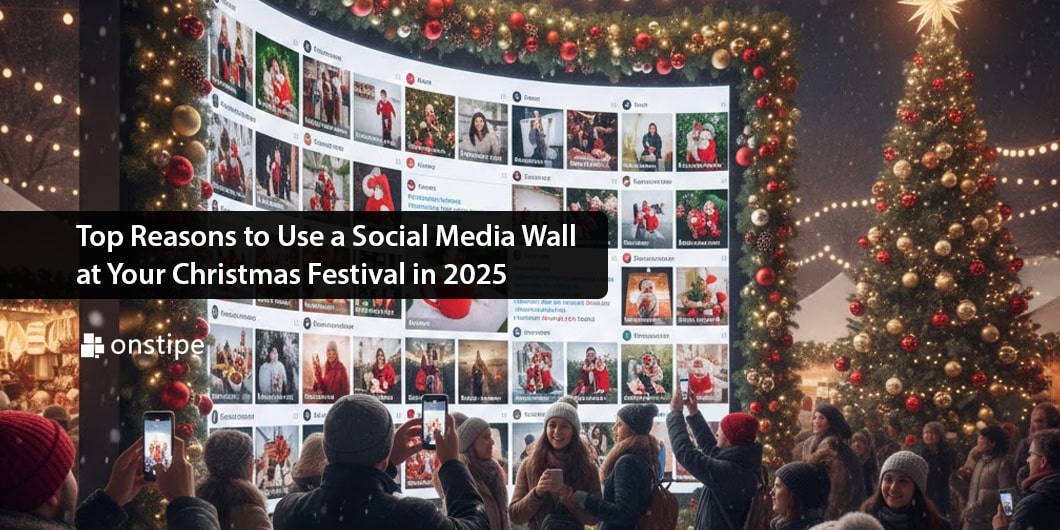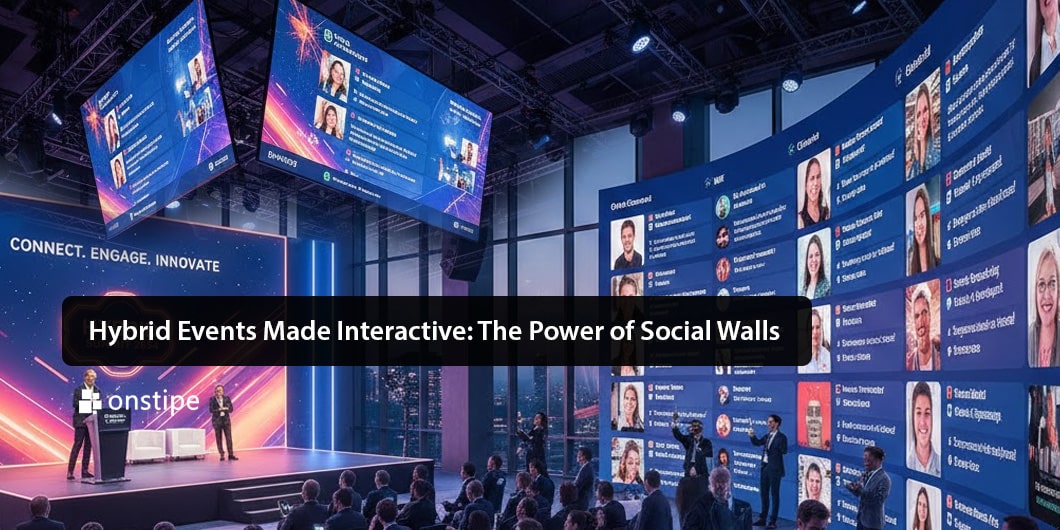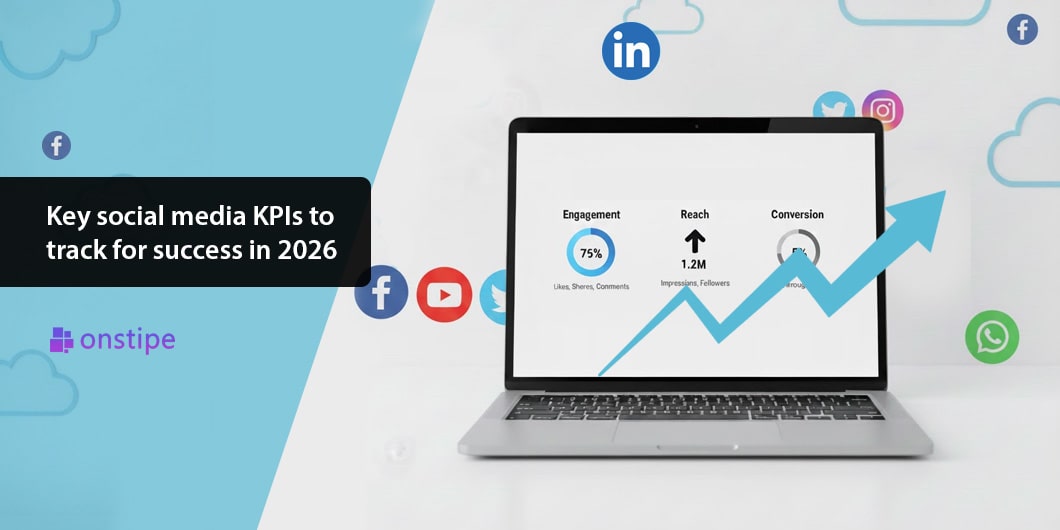Introduction: The Age of Authentic Influence
In a world where consumers are bombarded with advertisements, sleek campaigns, and polished influencer content, the modern buyer has become increasingly skeptical of traditional marketing. Instead, they turn to something more relatable and powerful: social proof. Rooted in psychology, social proof refers to the phenomenon where people mirror the behavior of others, especially when making decisions. If others trust a brand, it must be trustworthy. If many people are buying a product, it must be worth it.
Brands today recognize the immense value of social proof—not just in the form of reviews or testimonials, but through user-generated content (UGC), social media mentions, and real-time engagement. And rather than letting this valuable content remain scattered across platforms, many are turning to social media aggregators to collect, curate, and showcase it in a compelling way.
These aggregators (like Onstipe, TINT, Juicer, Yotpo, and Walls.io) help brands consolidate content from social media, review sites, and customer interactions into live feeds. By doing so, they build trust, foster engagement, and ultimately drive conversions. Below, we explore real-life examples of leading brands that are using aggregated social feeds to transform digital marketing through authentic influence.
1. Glossier: Empowering Customers as Brand Advocates
Beauty brand Glossier has built an empire on the foundation of user-generated content. Instead of relying solely on studio shots or influencer endorsements, Glossier puts the spotlight on everyday customers.
Using hashtags like #glossierpink and #glossierIRL, users post photos of themselves using Glossier products. These tagged posts are then aggregated using tools like Onstipe and embedded into the brand’s product pages. As potential buyers browse skincare and makeup items, they’re met not just with product details but with a mosaic of real people confidently using the products.
This strategy:
- Enhances authenticity
- Showcases product diversity across skin tones and styles
- Creates a sense of community
By letting real customers tell their own stories visually and verbally, Glossier has redefined how beauty brands engage audiences online.
Key takeaway: Aggregated UGC creates emotional resonance that drives both trust and action.
2. GoPro: Crowdsourcing Adventure with #GoProMillionDollarChallenge
Few brands have mastered the use of social media aggregation like GoPro. Its audience—adventure seekers, athletes, and creators—is eager to share jaw-dropping footage. Recognizing this, GoPro runs initiatives like the #GoProMillionDollarChallenge, where users submit content captured with GoPro cameras in hopes of being featured—and rewarded.
The submitted content is aggregated using platforms like TINT and featured across GoPro’s website and social channels. It becomes an ever-updating stream of high-octane UGC, showcasing exactly what the product can do—without the brand having to create content itself.
This strategy:
- Generates brand loyalty through recognition
- Offers immersive product demos via real users
- Fosters community pride
The result is a feed that not only acts as product promotion but also as proof that the gear works in extreme conditions—all delivered by authentic users.
Key takeaway: When your customers are your content creators, aggregation turns them into your most persuasive sales team.
3. Tourism Australia: Turning Hashtag Campaigns into Visual Travel Guides
Travel brands thrive on emotion, and Tourism Australia has perfected the art of using social proof to inspire wanderlust. Through the campaign #SeeAustralia, the tourism board encouraged travelers to share photos and stories of their Australian experiences. Using aggregators like Juicer or Stackla, they collected and displayed this UGC on their official website and tourism portals.
This dynamic, curated feed provides:
- A real-time visual guide for prospective travelers
- Authentic glimpses into diverse destinations
- Trust that the experience is as beautiful as promised
Rather than polished brochure images, viewers see real people swimming at Bondi Beach, hiking the Outback, and exploring city culture—instilling confidence and excitement about the trip.
Key takeaway: Authentic traveler content adds persuasive power that no traditional ad campaign can replicate.
4. Sephora: Visual Reviews That Sell
Sephora combines the power of traditional reviews with UGC to create highly convincing product pages. With tools like Yotpo and Bazaarvoice, they gather reviews, photos, and videos from verified customers and display them alongside product listings.
This multi-layered content strategy does three things:
- Validates product claims
- Provides proof across diverse users (skin types, makeup styles)
- Reduces uncertainty for first-time buyers
Shoppers can filter reviews by skin tone or concern, view before-and-after photos, and even see how products look in natural lighting. It’s no longer about what the brand says—it’s about what the community shows.
Key takeaway: Visual reviews + aggregated feedback eliminate the need for guesswork.
5. Coca-Cola: Real-Time Social Walls at Live Events
Coca-Cola’s #ShareACoke campaign went beyond clever packaging—it turned customers into brand storytellers. At major events like the Olympics and World Cup, Coca-Cola set up massive digital screens featuring real-time social media walls that aggregated posts tagged with the campaign hashtag.
Using tools like Walls.io, the brand displayed photos and tweets live on-site, turning everyday fans into campaign participants. This level of real-time engagement offered two major benefits:
- Increased social sharing, as users aimed to be featured
- Event attendees became part of the campaign’s content
By combining physical presence with digital amplification, Coca-Cola created an immersive brand experience that traveled far beyond the venue.
Key takeaway: Real-time aggregation at live events drives participation and deepens emotional connection.
6. SHEIN: Incentivized UGC and Review Aggregation
Fashion e-commerce giant SHEIN leverages a powerful UGC strategy that feeds directly into its product discovery and sales funnel. Customers are encouraged to upload outfit photos, write reviews, and share sizing details in exchange for loyalty points. This content is aggregated and prominently displayed on product pages.
Why it works:
- Creates massive volumes of peer reviews
- Shows real customers with different body types wearing the clothes
- Helps shoppers gauge fit, quality, and style more accurately
What sets SHEIN apart is the scale of aggregation—hundreds of photos and reviews per product in many cases—creating overwhelming social proof that builds trust in a low-touch shopping environment.
Key takeaway: Incentivized, aggregated UGC becomes a self-sustaining engine of credibility.
7. Loews Hotels: #TravelForReal Humanizes Luxury Stays
Hospitality brand Loews Hotels launched its #TravelForReal campaign to give potential guests a glimpse into the true guest experience. Using TINT, Loews aggregated guest photos from Instagram and Twitter and displayed them across their website and booking pages.
Instead of stock photos or exaggerated luxury shots, users saw:
- Families lounging by the pool
- Couples enjoying breakfast in bed
- Business travelers working from scenic hotel spots
This strategy not only added credibility but made the brand more approachable—showing that luxury travel could also be real, comfortable, and attainable.
Key takeaway: Aggregated social proof shifts perception from aspirational to achievable.
8. Adidas: Hashtag Activations that Fuel E-Commerce
Adidas is no stranger to creating cultural moments, especially through campaigns like #HereToCreate or #ImpossibleIsNothing. These hashtag-driven activations aren’t just for engagement—they serve as high-performing content pipelines.
Adidas uses aggregators to:
- Collect UGC from fitness enthusiasts and creators
- Curate visuals for campaign-specific landing pages
- Showcase relatable athletes and influencers in real-time
By merging branded storytelling with community contributions, Adidas reinforces its message while letting the audience be the hero.
Key takeaway: Campaign-specific UGC feeds can boost momentum and brand equity simultaneously.
Why Aggregated Feeds Work So Well
Across all these examples, the magic lies in the aggregation. Brands are no longer forced to choose between UGC and brand content. With the right tools, they blend both seamlessly—curating vibrant, living content libraries that are:
- Authentic: Sourced from real users
- Dynamic: Updated in real-time
- Trustworthy: Peer-validated
- Conversion-focused: Strategically placed on high-impact pages
Aggregators like Onstipe, Juicer, and Walls.io also allow for moderation, filtering, and design customization, ensuring content quality aligns with brand standards.
Conclusion: Turn Your Audience into Advocates
In an era where trust is the most valuable currency, social proof isn’t optional—it’s essential. Brands that embrace aggregated feeds of UGC, reviews, testimonials, and hashtag content are doing more than keeping up with trends—they’re building credibility at scale.
Whether you’re a beauty brand like Glossier, a global player like Coca-Cola, or a travel brand like Tourism Australia, the strategy remains the same: Let your audience speak for you. Then, amplify their voices. If you haven’t yet invested in social media aggregation, now’s the time. Your customers are already creating the content. Aggregating it is how you turn that content into conversion.







